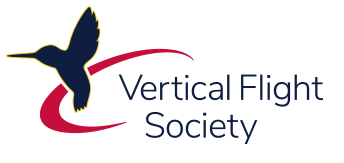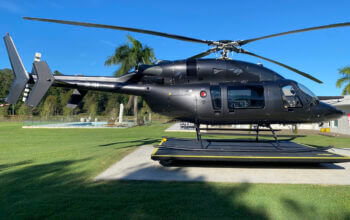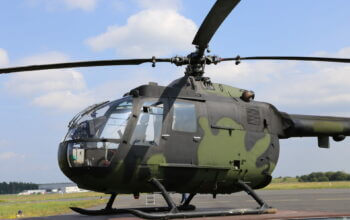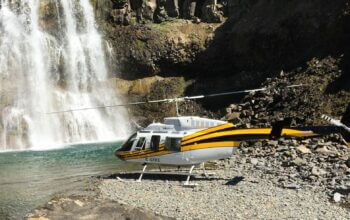NEXA Advisors and the Vertical Flight Society (VFS) have announced the completion of a comprehensive year-long study, Urban Air Mobility — Economics and Global Markets. The groundbreaking NEXA report, undertaken in a partnership with VFS, contains forecasts for 74 metropolitan areas over the period of 2020 – 2040. The online databases include thousands of geocoded data features and characteristics of each city, as well as the study’s findings on their potential market for urban air mobility (UAM). Included on these web pages are custom ArcGIS maps of each city. The public can explore the deep city-level analysis available, using New York City as an example, at www.nexa-uam.com.
Each metropolitan area has a unique “DNA” — a complex blend of current transportation issues, congestion, population density, airports, existing transportation infrastructure, regulation, business aviation, gross domestic product (GDP), local politics, per capita income, and a host of other factors — that contribute to the likelihood of it being an early or late user of electric-powered vertical takeoff and landing (eVTOL) aircraft.
“Despite the many differences, even the smallest cities will eventually create sustainable and profitable UAM services for their communities,” said Michael Dyment, NEXA’s managing partner. “With over 60 data layers, the interactive city data sets allow subscribers to analyze their own investment opportunities and business cases, an unparalleled tool in today’s emerging UAM market.”
The study was conducted to accelerate investment into UAM markets. “We wrote it primarily because many of our investors and charter subscribers are hoping to unpack the universe of urban air mobility to put capital to work, but can’t yet decide what or where the early opportunities are,” said Dyment. “The UAM Market studies prepared by Morgan Stanley, Booz Allen and others over the past year were very good but high level, so we took a different approach: Start with the cities and examine UAM from the unique characteristics inherent in each one. This would help identify early investment opportunities.”
The report notes that there will be an “Inflection Point” when certified automation systems can permit pilotless passenger flights within the next decade; this is where the market will start to grow exponentially to an estimated 1.3 billion passengers predicted in the 74 cities over the 20-year period.
“This report is also a first attempt to identify the cost of UAM infrastructure: $32 billion for all 74 cities by 2040. This is very affordable as potential revenues generated from this infrastructure will be in excess of $244 billion,” Dyment noted. There are more investment opportunities than just infrastructure, however. “We tallied up a 20-year forecast of a $318 billion opportunity for infrastructure (vertiports, traffic management), vehicles and five different UAM operator segments: airport shuttle, on-demand air taxi, emergency services, business aviation (corporate campus) and regional (250 mile) point-to-point charters,” Dyment noted. “Six other market segments including cargo and military will be studied later.”
NEXA identified potential areas to put capital to work sooner rather than later:
- Helicopter charter (FAR part 135) operators will be early beneficiaries of eVTOL, and therefore first adopters. They can introduce new limited services without having to wait for special airspace designations, such as an Urban Air Traffic Management (UATM) system. These charter operators will need direct investment to thrive in operating UAM, but this is city-by-city dependent. The report locates and geocodes the largest collection of heliports in the world — 4,300.
- A small number of cities are ready to grant concessions and invite modest infrastructure investment over the next two years. Any new vertiports have to be in place in order to facilitate even modestly higher scale operator services. According to the NEXA study, Vancouver, Miami, Singapore and a dozen other cities could get going in 2020.
- A half-dozen of these cities appear willing to co-invest in UATM testing now. This is good news for the typical aerospace companies who provide Air Traffic Management (ATM) and Communication Navigation and Surveillance (CNS) systems to air navigation service providers (ANSPs).
- Certain battery and avionics technologies would warrant investment soon, as well as power systems for rapid recharging/replenishment, including hydrogen cell technologies.
The landmark study was a joint undertaking by respected aerospace industry organizations, associations, researchers, publishers and marketing and financial advisors. The lead underwriting sponsor is NEXA Advisors, a NEXA Capital Partners LLC company with a proven record performing “multi‐client” investment‐related research for the aerospace sector. The Vertical Flight Society contributed its expertise and its extensive library of technical and research studies and white papers covering critical topics in electric VTOL, including vehicle developers. The other study sponsors were the Aviation Week Network, Blue Raster, Crown Consulting, Environmental Systems Research Institute (ESRI), Gannett Fleming, JetNet, National Business Aviation Association (NBAA) and Unmanned Airspace.
“We are especially grateful for the diligent research support provided by the Vertical Flight Society, and look forward to their assistance in evaluating the six adjacent UAM markets we intend to research this Fall,” said Dyment.
“The Vertical Flight Society is very pleased to help bring this report out,” said Mike Hirschberg, VFS executive director. “We have been championing the potential of electric VTOL for UAM and other missions for the past six years because we believe that there is an ‘Electric VTOL Revolution’ that could transform society. The NEXA study and database will be invaluable to investors who want to make this happen.”
NEXA will make the first public presentation of the study at the upcoming VFS “Workshop on eVTOL Defining Challenges for Urban Air Mobility: Infrastructure, Airspace Management and System Safety,” Sept. 10 to 12, 2019, in Washington, D.C.









